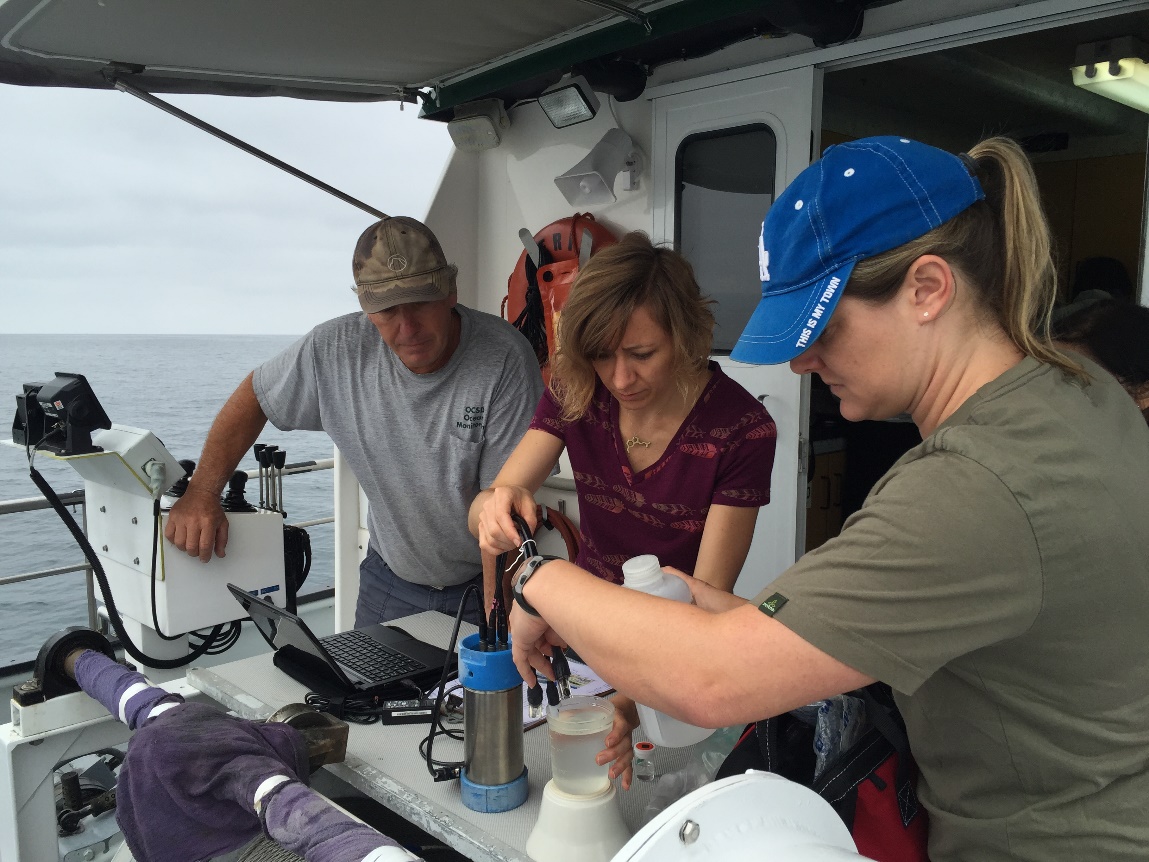XPRIZE-developed pH sensors being tested as Bight profilers

SCCWRP and its four POTW member agencies have kicked off a year-long effort to evaluate whether ocean pH monitoring instruments developed through an international XPRIZE competition can be used effectively for nearshore regulatory monitoring in the Southern California Bight.
SCCWRP – along with the Sanitation Districts of Los Angeles County, City of Los Angeles Sanitation, Orange County Sanitation District, and City of San Diego Public Utilities Department – completed a test deployment in early August during a training exercise in the nearshore waters off Crystal Cove. Next, the member agencies will deploy the XPRIZE sensors during their routine regulatory monitoring.
All semifinalists in the XPRIZE’s $2 million Wendy Schmidt Ocean Health competition have been invited to compete in SCCWRP’s post-prize competition to assess the potential regulatory application of their devices.
The main XPRIZE competition, which concluded in July, was a global contest that invited researchers to design and build next-generation pH sensor technologies that improve the ability to measure ocean chemistry and accurately track ocean acidification trends. The winner was Sunburst Sensors of Missoula, Mont.
The goal of the SCCWRP-facilitated post-prize competition is to identify one or more viable XPRIZE technologies to replace glass electrodes, which are the standard pH profiling instrument used for nearshore regulatory monitoring.
SCCWRP has previously demonstrated that glass electrodes cannot track changes at the level of precision required to address California’s Ocean Plan Standard, which mandates that ocean pH must not be changed by more than ± 0.2 pH units from that which occurs naturally.
So far, three finalists from the XPRIZE competition have submitted their sensors for post-prize evaluation: the ANB sensor, a novel electrochemical electrochemical system that can measure pH of low-ionic-strength solutions with no natural buffer; the Cross Strait sensor, a device built with micro solid ion selective electrodes (ISEs) and designed for resistance to ocean bio-fouling and chemo-fouling; and the SINDEN sensor, a non-glass in situ pH sensor that uses an ion sensitive field effect transistor (ISFET) as the pH electrode and a chloride ion selective electrode (Cl-ISE) as the reference electrode.
SCCWRP also is pursuing other strategies for improving the precision of routine pH ocean profiling. As part of Bight ’13, SCCWRP and its member agencies are investigating use of discrete pH bottle measurements to improve in situ calibration with glass electrodes.
For more information about the SCCWRP-facilitated regulatory evaluation phase of the XPRIZE prototype sensors, contact Dr. Karen McLaughlin.
More news related to: Climate Change, Ocean Acidification and Hypoxia, Regional Monitoring, Top News